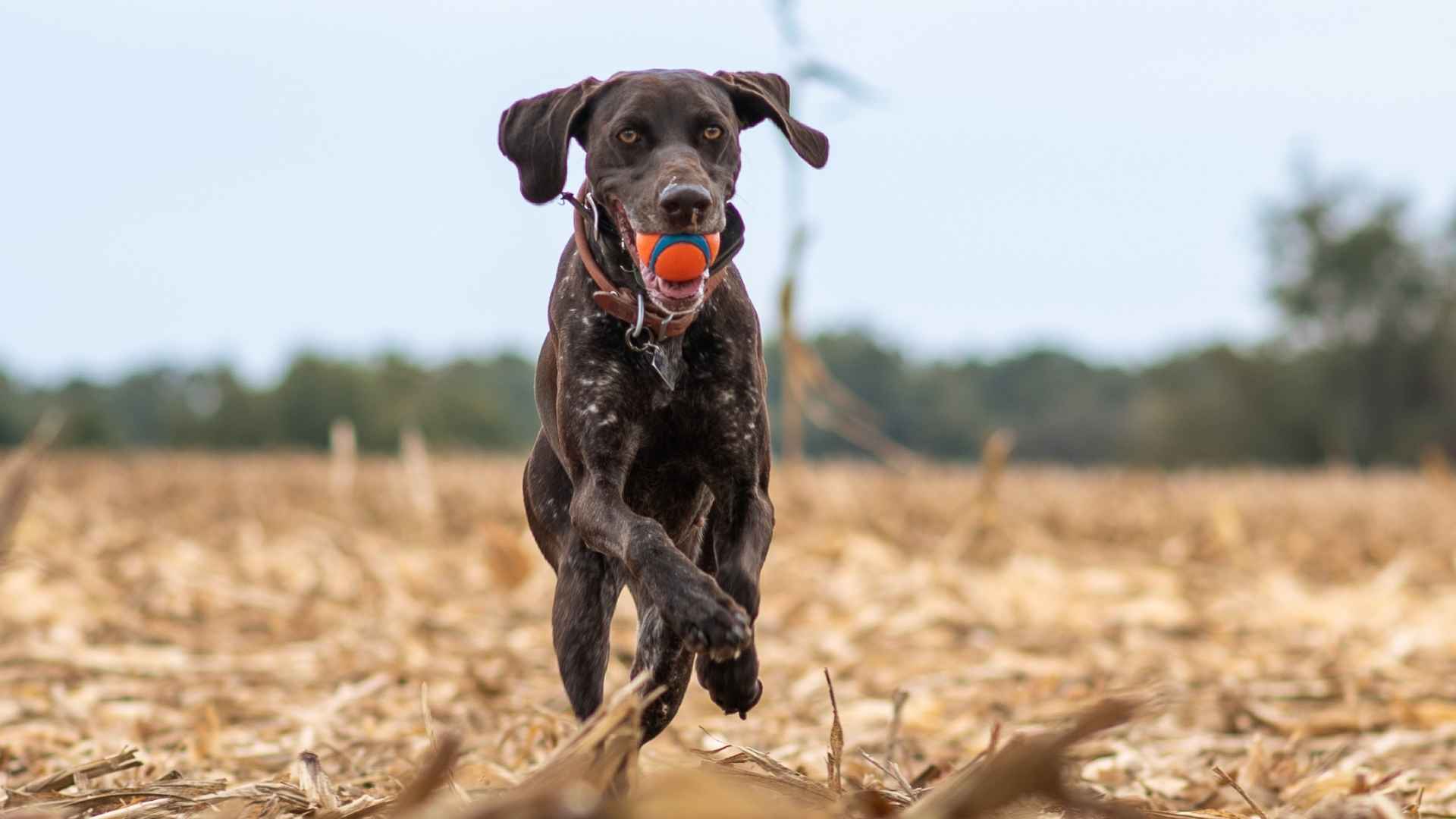For many dog lovers, allergies can be a heartbreaking barrier to pet ownership. Sneezing, itching, or wheezing are common reactions to the proteins found in a dog’s dander, saliva, or urine, making the search for a suitable companion a bit more complicated. That’s where hypoallergenic dog breeds come in. While no dog is completely allergen-free, certain breeds produce significantly fewer allergens, making them more compatible with allergy-sensitive households.
Now, imagine pairing that hypoallergenic trait with the energy and versatility of Sporting dogs. Originally bred to assist hunters by retrieving, pointing, or flushing game, Sporting breeds are active, intelligent, and always ready for adventure. They excel in water, woodland, and field environments, with coats often designed to withstand the elements. Despite their rugged build and high activity levels, some Sporting breeds are also known for producing lower levels of allergens.
In this article, we’ll explore hypoallergenic Sporting dog breeds, the rare but remarkable dogs that combine a love for action with allergy-friendly coats. If you want a spirited outdoor companion that won’t leave you sniffling, this guide is for you.
Hypoallergenic Sporting Dog Breeds
1. Irish Water Spaniel
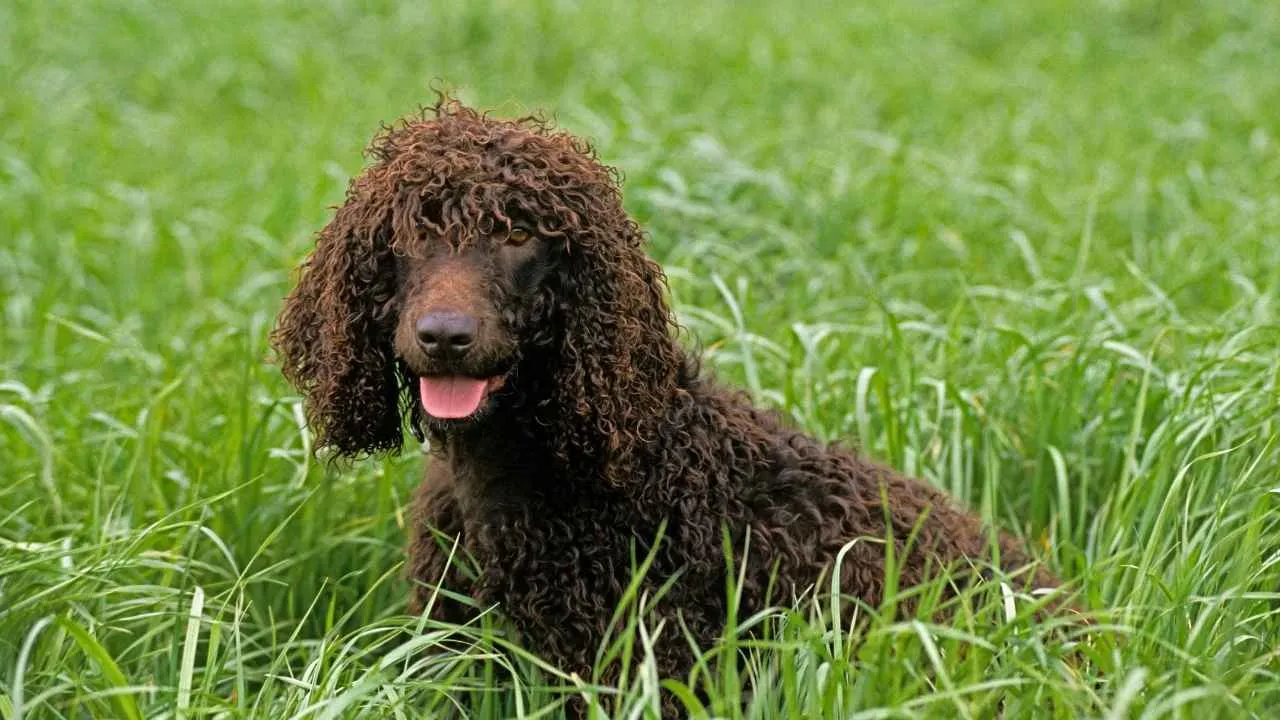
The Irish Water Spaniel offers a winning combination of energy, intelligence, and allergy-friendly traits. Bred to retrieve game from both land and water, this versatile dog is known for its distinctive liver-colored, curly coat, which naturally sheds less and produces fewer allergens, making it a better match for allergy-sensitive owners.
The AKC states that the Irish Water Spaniel, the tallest among AKC-recognized spaniels, stands out with its tightly curled coat and distinctive tapering “rat tail.” Energetic and eager to please, this breed thrives on activity and mental stimulation.
Care Needs
The Irish Water Spaniel’s dense, water-resistant coat needs consistent care to remain healthy and tangle-free. Regular brushing, at least once or twice a week, is necessary to prevent mats and maintain its signature texture. Occasional trimming may also be needed, especially around the ears and feet. This breed benefits from a balanced diet appropriate for its age and activity level, with weight monitored closely to avoid obesity.
Owners should also ensure fresh water is always available and be cautious with certain medications, such as sulfa antibiotics and Ivermectin, due to possible adverse reactions. Routine vet visits and screenings for conditions like hip dysplasia, allergies, and thyroid issues help support long-term health.
Fun Fact: The Irish Water Spaniel is always liver-colored and sports a dense, curly coat that contributes to its hypoallergenic qualities.
2. Lagotto Romagnolo
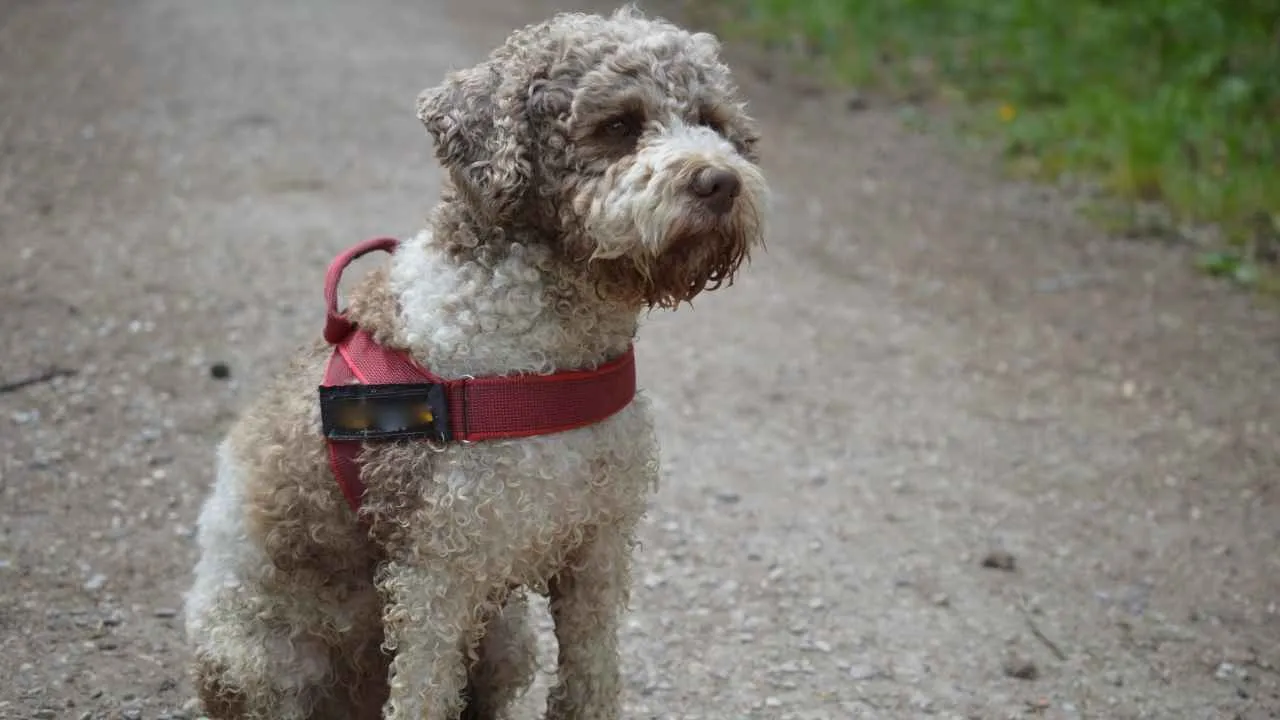
Known for its tightly curled, woolly coat that sheds very little, this breed is an excellent option for allergy-sensitive owners. Purina reports that the Lagotto Romagnolo, commonly known as the Lagotto, is a compact, medium-to-small dog with a sturdy frame and a rugged, natural look.
Originally bred in Italy for truffle hunting, the Lagotto combines a keen nose with a loyal and affectionate personality. Though small to medium in size, it’s packed with energy, intelligence, and a natural love for the outdoors.
Care Needs
This active breed requires a substantial amount of daily exercise, ideally about two hours split between walks, play, and mentally stimulating activities like scent games or training. Lagottos love digging, swimming, and sniffing, so varied environments and off-leash opportunities are essential. Their dense, curly coat doesn’t shed much, but it does require regular brushing and professional grooming every few weeks to prevent matting and maintain its hypoallergenic quality.
While they don’t need a large home, access to open space or a secure garden is important for meeting their physical and mental needs. The Lagotto may be wary of frequent strangers in the home, so early socialization is key to managing their natural watchful instincts.
Fun Fact: Originally bred in Italy, the Lagotto Romagnolo is the world’s only purebred dog specifically developed for truffle hunting.
3. Barbet
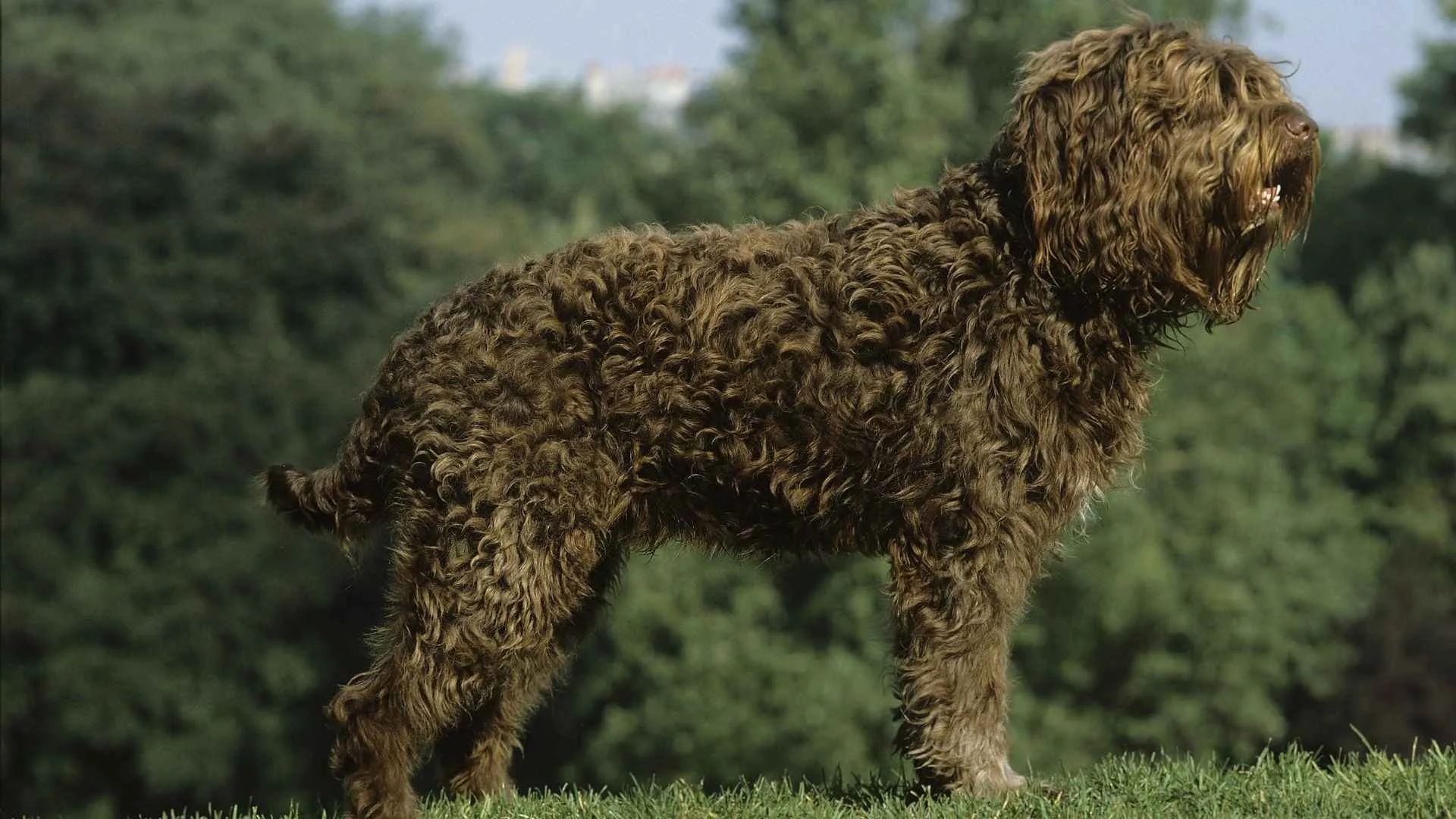
The Barbet is a rare gem among hypoallergenic sporting dog breeds, blending a history of waterfowl hunting with a low-shedding, curly coat ideal for allergy-conscious homes. Originating in France, this cheerful and intelligent breed is known for its natural affinity for water and outstanding retrieving abilities.
PetMD claims that Barbet dogs are smart, devoted, and easy to train, making them great companions for active households. Their playful and gentle temperament also makes them well-suited for families with children and other animals. Their dense, woolly fur helps shield them from cold temperatures during aquatic adventures, and it also traps fewer allergens than other shedding breeds, making them a strong hypoallergenic option.
Care Needs
Though allergy-friendly, the Barbet’s coat requires consistent attention. To prevent tangles and matting, especially after swimming, owners should brush their dog’s coat with a slicker or pin brush at least two to three times a week. Occasional professional grooming helps maintain the coat’s texture and cleanliness.
In addition to coat care, Barbets need daily physical and mental stimulation. At least an hour of exercise through activities like swimming or canine sports such as agility and obedience will keep them happy and healthy. Their adaptable nature and willingness to please make training relatively easy for dedicated pet parents.
Fun Fact: The breed’s name, Barbet (pronounced “bar-bay”), comes from the French word barbe, meaning “beard”, a nod to its famously shaggy chin.
4. American Hairless Terrier
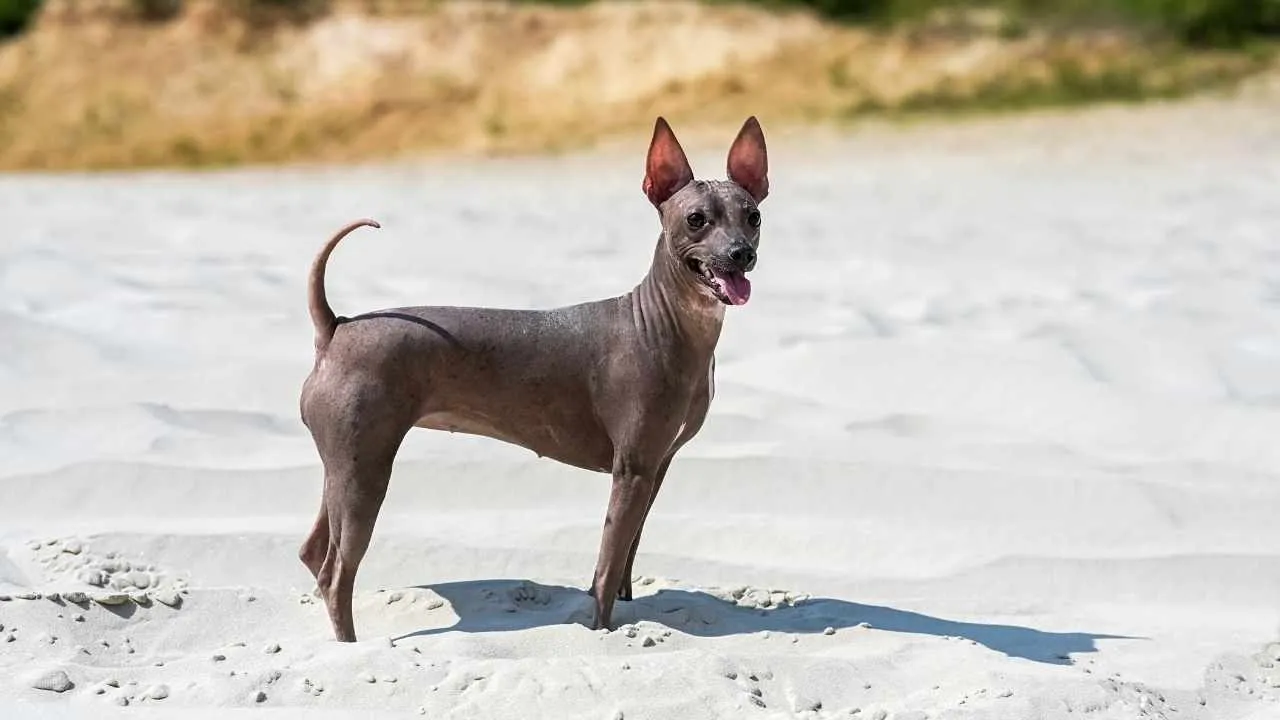
Energetic, alert, and highly adaptable, the American Hairless Terrier excels in canine sports like barn hunt, combining athleticism with a minimal-allergen profile. Hill’s Pet states that in terms of personality, the American Hairless Terrier is a true terrier, bright, lively, and full of energy.
These charming dogs are both eager to please and intelligent, making them easy to train. Unlike other hairless breeds, their lack of fur stems from a recessive gene mutation traced back to the Rat Terrier, making them a relatively new and rare breed developed in the 1970s.
Care Needs
Despite being hairless, the American Hairless Terrier still requires specific skin care. Without fur for protection, their skin is more exposed to sunburn, dryness, and irritation, so applying dog-safe sunscreen and moisturizing when needed is essential. Bathing should be done with a gentle cleanser to remove dirt and prevent buildup in hairless pores.
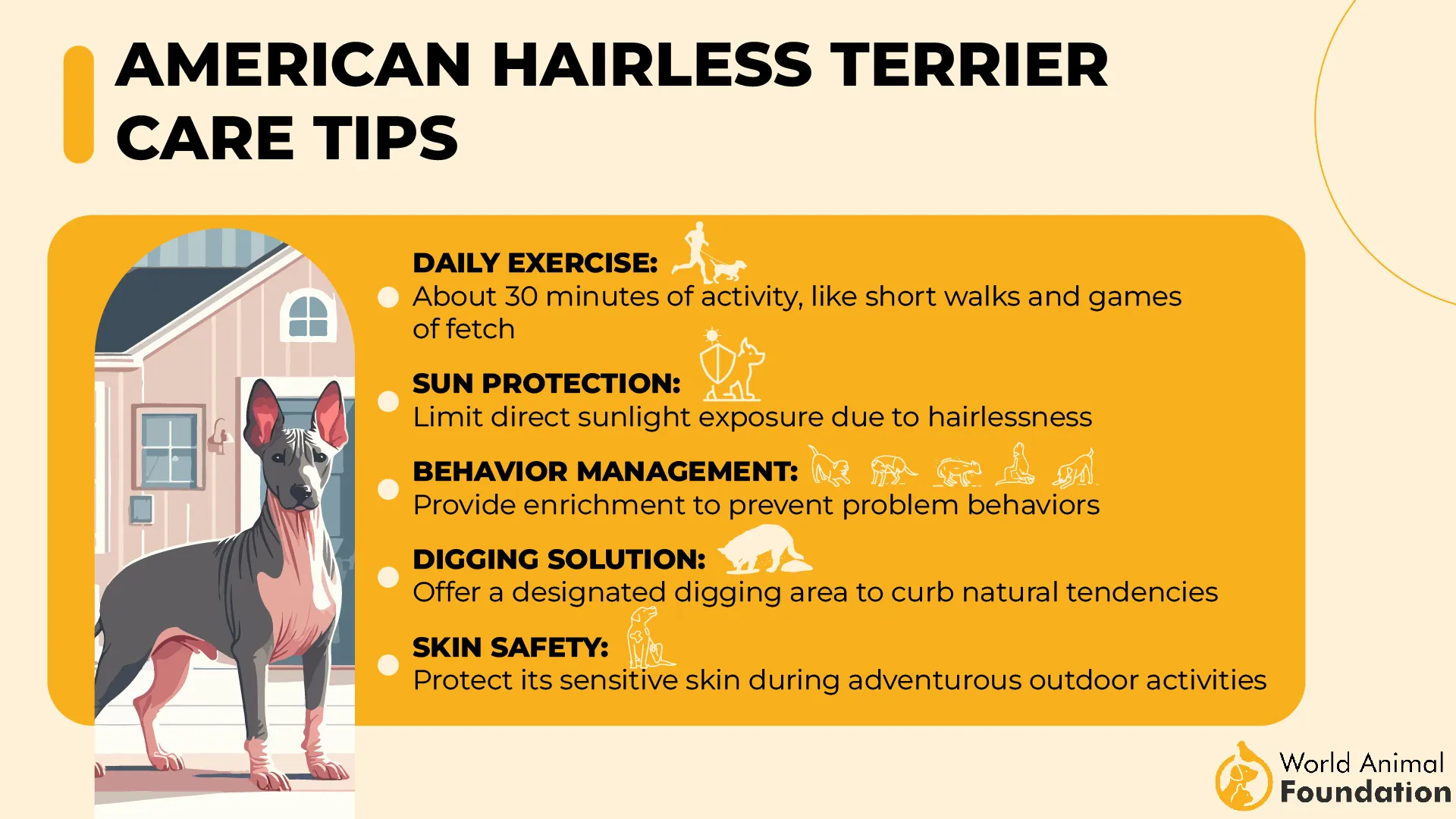
For the coated variety, occasional brushing is sufficient due to their short, soft fur. As a high-energy breed, daily exercise and mental stimulation are important to keep them content and well-behaved. Regular vet checkups and a balanced diet will help maintain their long-term health, as their gene pool can be limited and requires thoughtful breeding practices.
Fun Fact: The American Hairless Terrier was developed from a Rat Terrier in the 1970s and is one of the only truly hairless, hypoallergenic breeds.
5. Curly Coated Retriever
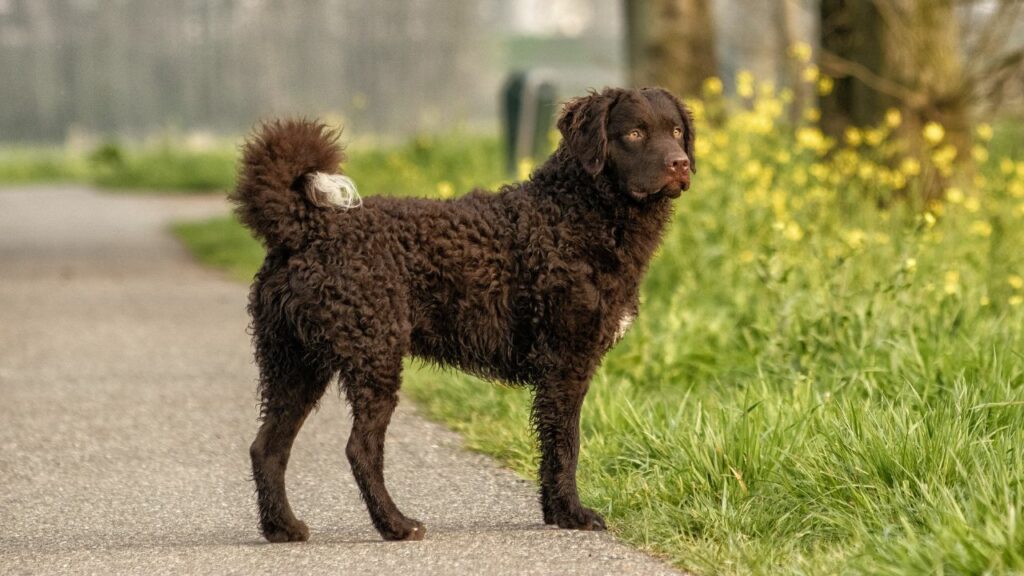
The Curly Coated Retriever stands out for its striking appearance and minimal-shedding coat. As one of the oldest gundog breeds, this tall, athletic retriever excels in fieldwork, retrieving, and water-based activities. Its tightly curled, water-resistant coat traps less dander and sheds less than many other sporting breeds, making it a great option for allergy-conscious, active families.
Care Needs
The Curly Coated Retriever’s coat is surprisingly low-maintenance for such a textured breed. While it sheds seasonally, its tight, crisp curls require only occasional brushing to remove debris and prevent tangles.
Regular rinsing after outdoor adventures helps keep the coat clean, but baths should be infrequent to maintain the natural oils that keep the curls healthy. These intelligent, high-energy dogs need plenty of daily exercise, at least two hours of varied activity, including retrieving, off-leash exploration, and interactive play.
Positive reinforcement training is essential, and they thrive under the guidance of an experienced owner who keeps them engaged.
Fun Fact: Though not traditionally seen as guide dogs, this retrieving dog has become increasingly popular for this role, offering both intelligence and an allergen-friendly coat.
6. Cirneco dell’Etna
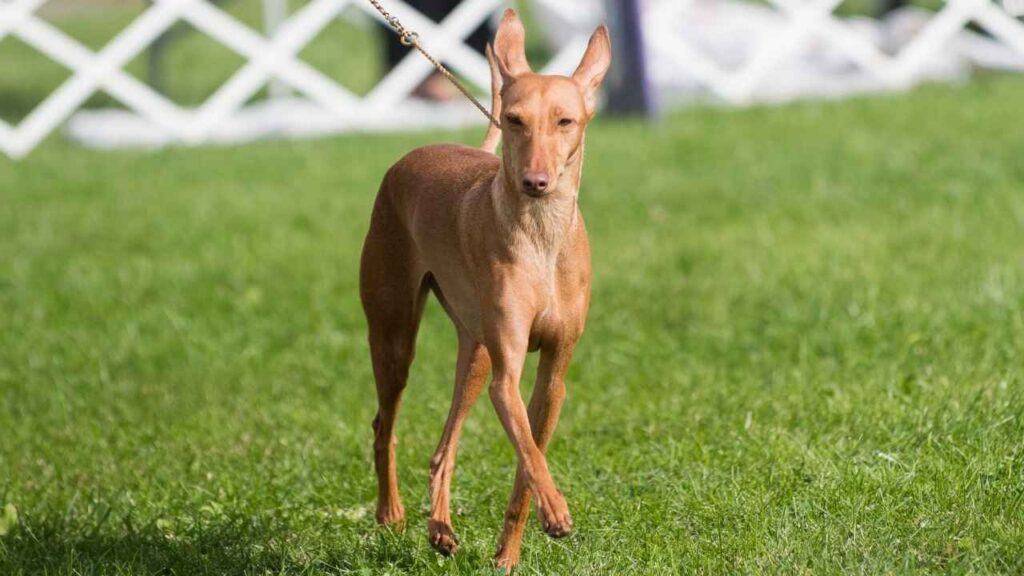
The Cirneco dell’Etna combines elegance, speed, and low-allergen appeal. Originating from Sicily, this ancient coursing hound is built for agility and endurance, making it an excellent choice for active households and sport-focused owners.
While its sleek build and keen hunting instincts reflect its sighthound lineage, the Cirneco is surprisingly affectionate and adaptable in home settings.
Care Needs
This hunting dog’s short, smooth coat is one of its most hypoallergenic features. This dogs shed minimally and requires only occasional grooming. A quick weekly brush with a soft bristle brush or hound glove is typically enough to maintain its clean, polished look. Bathing is rarely needed unless the dog gets particularly dirty.
Nutritionally, a high-quality diet matched to their age and activity level supports their lean build and energy. Like many active breeds, they benefit from early socialization and gentle, consistent training methods. Their strong prey drive means caution is needed when around cats or small animals, and activities like lure coursing are ideal for satisfying their instinctual needs.
Fun Fact: The Cirneco dell’Etna has remained largely unchanged for centuries and is known for being more trainable than most traditional sighthounds.
7. German Wirehaired Pointer
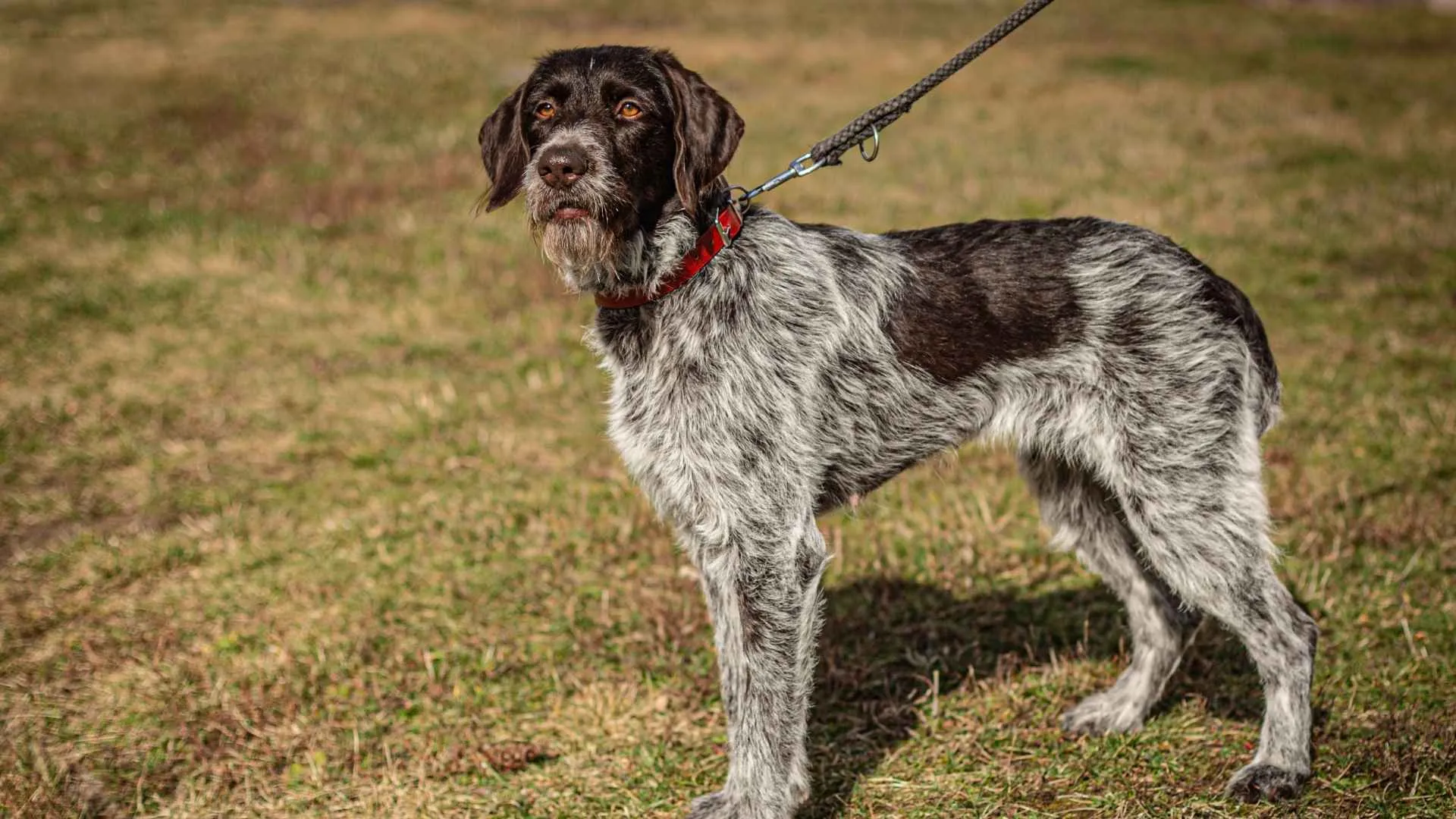
The German Wirehaired Pointer (GWP) is prized for its low-shedding coat and exceptional versatility in the field. Originally bred for hunting across challenging terrain and weather conditions, GWPs are intelligent, driven, and loyal.
Their wiry, weather-resistant coat sheds minimally throughout the year, making them a more allergy-friendly option for active owners who want a dynamic canine companion.
Care Needs
Despite their outdoor instincts, German Wirehaired Pointers require regular human interaction and daily physical activity to stay balanced. They thrive on structured routines that include long walks and tasks that challenge their mind, such as agility or obedience training. Their harsh, wiry coat is relatively easy to maintain with weekly brushing, which helps remove dirt and reduce seasonal shedding.
The coat’s texture also helps trap less dander, contributing to its hypoallergenic quality. As a medium-sized breed, they weigh between 50–70 pounds and typically live 14–16 years. Like all breeds, they can develop health conditions, so pet insurance and regular vet checkups are recommended to support long-term wellness.
Fun Fact: German Wirehaired Pointers were bred to hunt on both land and in water, and their coat sheds only minimally with the seasons.
Conclusion
For active individuals or families living with dog allergies, finding the right companion can be challenging, but not impossible. While there’s no such thing as a completely allergen-free pup, certain breeds produce fewer allergens and shed less, making them more manageable for sensitive owners. The hypoallergenic sporting dog breeds featured in this article, like the Irish Water Spaniel and German Wirehaired Pointer, bring together energy, intelligence, and lower-allergen coats, ideal for those who crave adventure without the sniffles.
These breeds, recognized by the American Kennel Club, are among the best dogs for those seeking the perfect mix of field-ready instincts and allergy-conscious grooming needs. Others worth exploring include the Wirehaired Pointing Griffon, Afghan Hound, and Giant Schnauzer, all of which are known for their unique coats and active temperaments. Many of these dogs, particularly water dog breeds, also have coats designed to be resilient and less likely to trap dander.
While most dogs require love, training, and regular exercise, hypoallergenic sporting breeds offer a special balance of low-maintenance coats and high-performance traits. With proper grooming, care, and attention, these dogs can thrive alongside allergy-sensitive owners, proving that an active lifestyle and allergies don’t have to be mutually exclusive.


